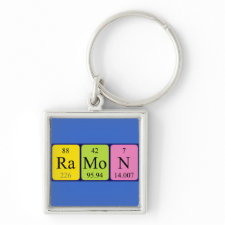
Authors: Gómez-Caballero A, Elejaga-Jimeno A, García del Caño G, Unceta N, Guerreiro A, Saumell-Esnaola M, Sallés J, Aránzazu Goicolea M, Barrio RJ
Article Title: Solid-phase synthesis of imprinted nanoparticles as artificial antibodies against the C-terminus of the cannabinoid CB1 receptor: exploring a viable alternative for bioanalysis.
Publication date: 2021
Journal: Microchimica Acta
Volume: 188
Issue: (11)
Article Number: 368.
DOI: 10.1007/s00604-021-05029-z
Abstract: The production of artificial anti-CB1 antibodies in nanoparticle format is described using the solid-phase imprinting approach. Instead of whole protein imprinting, a linear C-terminus sequence of the receptor comprising 15 amino acids (458-KVTMSVSTDTSAEAL-472) has been used as template, in accordance with the epitope imprinting approach. This sequence is located intracellularly, and it is involved in coupling to Gi/o proteins, being responsible for CB1 receptor desensitisation and internalisation. Developed molecularly imprinted materials were found to be in the nanometre scale, with a particle size of 126.4 ± 10.5 nm at pH 3 (25 ℃ ) and spherical shape. It was also observed that the size was sensible to temperature changes being reduced to 106.3 ± 15.2 nm at 35 ℃ . Lower critical solution temperature of this polymer was found to be ~ 33.4 ℃ . The affinity and selectivity of the artificial antibody were assessed through dot blot and Western blot experiments. For the latter, recombinant fusion proteins GST-CB1414-472 and GST-CB1414-442 were produced to work respectively as target and negative control proteins. The control protein did not carry the target epitope for being devoid of last 30 amino acids at the C-terminus. The results demonstrated that the anti-CB1 material recognised selectively the target protein, thanks to the presence of the 15-amino acid sequence selected as epitope, which revealed that binding occurred at the C-terminus of the receptor itself. The methodology presented may pave the way for the development of novel imprinted nanomaterials for other proteins included in the superfamily of the G-protein-coupled receptors (GPCR)
Template and target information: protein, cannabinoid CB1 receptor, epitope
Author keywords: artificial antibody, Epitope imprinting, GPCR, CB1 receptor, Molecularly imprinted nanoparticles, bioanalysis



Join the Society for Molecular Imprinting

New items RSS feed
Sign-up for e-mail updates:
Choose between receiving an occasional newsletter or more frequent e-mail alerts.
Click here to go to the sign-up page.
Is your name elemental or peptidic? Enter your name and find out by clicking either of the buttons below!
Other products you may like:
 MIPdatabase
MIPdatabase









